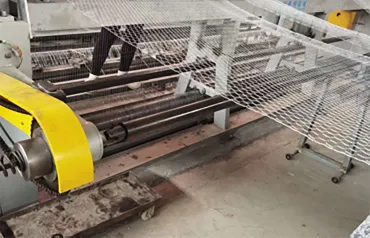11 月 . 03, 2024 18:54 Back to list
iron nail manufacture
The Manufacture of Iron Nails A Historical and Industrial Perspective
Iron nails have been an essential component in construction and woodworking for centuries. Their manufacture has evolved significantly over time, transitioning from simple hand-forging techniques to sophisticated mass production methods used in modern industry. This article will explore the history, manufacturing processes, and the significance of iron nails in various applications.
Historical Background
The use of nails dates back to ancient civilizations, with evidence of nails made from bronze and iron found in archaeological sites. By the Middle Ages, blacksmiths began forging iron nails by hand, using tools that allowed them to create durable and reliable fasteners. These nails were essential for building structures and furniture, as they provided the necessary strength and stability to hold components together.
Manufacturing Process
The production of iron nails today involves several key steps, each designed to ensure efficiency and quality.
1. Raw Material Sourcing The primary raw material used for nail production is steel, particularly low-carbon steel, which provides the necessary malleability and strength. Recycled steel is increasingly being used, aligning with sustainable practices.
2. Wire Drawing The production process begins with wire drawing, where large coils of steel are drawn through a series of dies to achieve the desired diameter. This process controls the thickness and ensures uniformity in the wire.
iron nail manufacture

3. Cutting and Heading The drawn wire is then cut into lengths appropriate for nail production. The cut pieces are fed into a heading machine that shapes one end into the head of the nail, typically using high-speed operations to ensure efficiency. This process creates a distinct shape that helps in the fastening process.
4. Shaping and Pointing After heading, the other end of the nail is shaped to form a sharp point, facilitating easier penetration into wood or other materials. This is typically done using a machine that further sharpens the tip to enhance its piercing ability.
5. Finishing and Coating To enhance durability and corrosion resistance, finished nails often receive coatings. Common coatings include galvanization, which involves applying a zinc layer, or other finishes like epoxy and paint. These coatings not only protect the nails from rust but also improve their aesthetic appeal.
6. Quality Control After production, nails undergo rigorous quality control measures. Tests for strength, durability, and coating integrity are conducted to ensure that the nails meet industry standards. This step is crucial for manufacturers to maintain their reputation and ensure customer satisfaction.
Applications and Importance
Iron nails are versatile and widely used in various applications, including construction, carpentry, and DIY projects. Their strength makes them ideal for securing wood, while their cost-effectiveness ensures that they remain a popular choice among builders and craftsmen.
In conclusion, the manufacture of iron nails has transformed considerably from its humble beginnings to a highly industrialized process. As we move into the future, innovations in materials and manufacturing techniques will continue to shape the industry, but the fundamental significance of iron nails in construction and woodworking will remain unchanged. With their enduring utility, iron nails are a testament to the ingenuity and resourcefulness that characterize human craftsmanship.
-
Secure Your Roof with Quality Roofing Nails
NewsNov.04,2024
-
Secure Your Property with Quality Field Fencing
NewsNov.04,2024
-
Enhance Your Space with Quality Mesh Fencing
NewsNov.04,2024
-
Discover the Versatility of Iron Wire for Your Projects
NewsNov.04,2024
-
Discover the Versatility of Common Nails for Your Projects
NewsNov.04,2024
-
Discover Quality Hydraulic Fittings for Your Applications
NewsNov.04,2024









